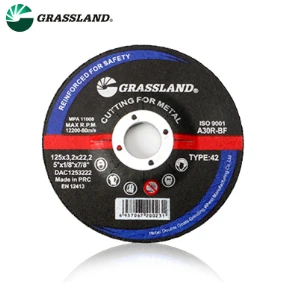Understanding Masonry Cut Off Discs Essential Tools for Precision and Safety
Masonry cut off discs are specialized tools designed for cutting hard materials such as brick, stone, concrete, and other types of masonry. These discs, which are typically attached to angle grinders or saws, are crucial in construction, renovation, and demolition tasks due to their efficiency and effectiveness. This article delves into the uses, types, safety considerations, and best practices when using masonry cut off discs.
What are Masonry Cut Off Discs?
Masonry cut off discs are circular blades crafted from abrasive materials designed to slice through tough substrates. They are engineered to withstand high temperatures and pressures, making them ideal for cutting through the dense and tough materials commonly found in masonry work. The discs come in various diameters and thicknesses, depending on the type and scale of the project.
Types of Masonry Cut Off Discs
1. Bonded Abrasive Discs These are the most common types and are made from a mixture of abrasive materials like aluminum oxide or silicon carbide, bonded together by a resin. They are primarily used for cutting bricks, concrete, and ceramics.
2. Diamond Blades Featuring industrial-grade diamonds embedded in the cutting edge, diamond blades are expensive but offer superior performance. They provide cleaner cuts, longer life, and can handle more demanding tasks like cutting reinforced concrete or asphalt.
3. Wet Cutting Discs Some masonry applications require wet cutting, where water is used to cool the blade and reduce dust. Wet cutting discs are designed for this purpose and typically feature diamond segments.
4. Thin Cutting Discs These discs are engineered for faster cutting and less material waste. They are preferred for tasks that require precision and minimal chipping along the edges.
Applications of Masonry Cut Off Discs
Masonry cut off discs can be used in various settings
masonry cut off disc

- Construction Sites For cutting bricks, blocks, and tiles during the building phase of residential or commercial construction. - Renovation Projects For removing old masonry, creating openings in walls, or resizing materials to fit new designs. - Demolition Work For breaking down structures made of concrete or brick safely and efficiently. - Landscaping For cutting stone pavers or curbing to create aesthetically pleasing outdoor spaces.
Safety Considerations
Using masonry cut off discs comes with its set of risks, so adhering to safety protocols is crucial
1. Personal Protective Equipment (PPE) Always wear appropriate safety gear, including goggles, gloves, ear protection, and a dust mask, to protect against flying debris and inhalation of dust.
2. Inspect the Disc Before Use Check for cracks, chips, or any signs of wear. Using a damaged disc can lead to breakage during operation, posing severe risks.
3. Proper Wheel Speed Ensure that the speed of the angle grinder matches the specifications of the disc. Operating at an incorrect speed can cause overheating and failure.
4. Secure the Workpiece Always clamp the material you are cutting to prevent movement, which can lead to accidents and uneven cuts.
5. Cut with Control Avoid applying excessive pressure, which can lead to loss of control. Allow the tool and disc to do the work.
Conclusion
Masonry cut off discs are invaluable for anyone involved in masonry work, providing the necessary precision and power to tackle tough jobs. By understanding the different types available, their applications, and the safety measures essential for their use, professionals and DIY enthusiasts alike can maximize the potential of these powerful tools. Ultimately, knowledge and respect for the tool's capabilities will result in more efficient, safer, and higher-quality outcomes in masonry projects.
Post time:Dec - 20 - 2024

















